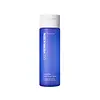What's inside
What's inside
 Key Ingredients
Key Ingredients

 Benefits
Benefits

 Concerns
Concerns

 Ingredients Side-by-side
Ingredients Side-by-side

Water
Skin ConditioningGlycerin
HumectantPropylene Glycol
HumectantGluconolactone
Skin ConditioningPropanediol
SolventPentylene Glycol
Skin ConditioningButylene Glycol
Humectant1,2-Hexanediol
Skin ConditioningSalix Alba Bark Extract
AstringentXanthan Gum
EmulsifyingCucumis Sativus Fruit Water
Skin ConditioningCaprylhydroxamic Acid
Diphenyl Dimethicone
EmollientSodium Hyaluronate
HumectantTriethylhexanoin
MaskingParfum
MaskingGlyceryl Acrylate/Acrylic Acid Copolymer
HumectantSodium Citrate
BufferingPvm/Ma Copolymer
Emulsion StabilisingHydrogenated Lecithin
EmulsifyingPolyglyceryl-10 Oleate
Skin ConditioningCitric Acid
BufferingLimonene
PerfumingLinalool
PerfumingBetaine Salicylate
AntimicrobialHydroxyacetophenone
AntioxidantEthylhexylglycerin
Skin ConditioningCitrullus Lanatus Fruit Extract
Skin ConditioningOpuntia Ficus-Indica Stem Extract
Skin ConditioningAdipic Acid
BufferingLithospermum Erythrorhizon Root Extract
Skin ConditioningWater, Glycerin, Propylene Glycol, Gluconolactone, Propanediol, Pentylene Glycol, Butylene Glycol, 1,2-Hexanediol, Salix Alba Bark Extract, Xanthan Gum, Cucumis Sativus Fruit Water, Caprylhydroxamic Acid, Diphenyl Dimethicone, Sodium Hyaluronate, Triethylhexanoin, Parfum, Glyceryl Acrylate/Acrylic Acid Copolymer, Sodium Citrate, Pvm/Ma Copolymer, Hydrogenated Lecithin, Polyglyceryl-10 Oleate, Citric Acid, Limonene, Linalool, Betaine Salicylate, Hydroxyacetophenone, Ethylhexylglycerin, Citrullus Lanatus Fruit Extract, Opuntia Ficus-Indica Stem Extract, Adipic Acid, Lithospermum Erythrorhizon Root Extract
Water
Skin ConditioningGlycolic Acid
BufferingHamamelis Virginiana Water
AstringentLactic Acid
BufferingSodium Hydroxide
BufferingPolysorbate 20
EmulsifyingPhenoxyethanol
PreservativeParfum
MaskingPhytic Acid
Ethylhexylglycerin
Skin ConditioningGlycerin
HumectantChamomilla Recutita Flower Extract
MaskingCitrus Limon Fruit Extract
MaskingGlycyrrhiza Glabra Root Extract
BleachingSaccharum Officinarum Extract
MoisturisingSantalum Album Extract
CleansingBenzoic Acid
MaskingLeuconostoc/Radish Root Ferment Filtrate
AntimicrobialTocopherol
AntioxidantCitral
PerfumingLimonene
PerfumingLinalool
PerfumingWater, Glycolic Acid, Hamamelis Virginiana Water, Lactic Acid, Sodium Hydroxide, Polysorbate 20, Phenoxyethanol, Parfum, Phytic Acid, Ethylhexylglycerin, Glycerin, Chamomilla Recutita Flower Extract, Citrus Limon Fruit Extract, Glycyrrhiza Glabra Root Extract, Saccharum Officinarum Extract, Santalum Album Extract, Benzoic Acid, Leuconostoc/Radish Root Ferment Filtrate, Tocopherol, Citral, Limonene, Linalool
 Reviews
Reviews

Ingredients Explained
These ingredients are found in both products.
Ingredients higher up in an ingredient list are typically present in a larger amount.
Ethylhexylglycerin (we can't pronounce this either) is commonly used as a preservative and skin softener. It is derived from glyceryl.
You might see Ethylhexylglycerin often paired with other preservatives such as phenoxyethanol. Ethylhexylglycerin has been found to increase the effectiveness of these other preservatives.
Glycerin is already naturally found in your skin. It helps moisturize and protect your skin.
A study from 2016 found glycerin to be more effective as a humectant than AHAs and hyaluronic acid.
As a humectant, it helps the skin stay hydrated by pulling moisture to your skin. The low molecular weight of glycerin allows it to pull moisture into the deeper layers of your skin.
Hydrated skin improves your skin barrier; Your skin barrier helps protect against irritants and bacteria.
Glycerin has also been found to have antimicrobial and antiviral properties. Due to these properties, glycerin is often used in wound and burn treatments.
In cosmetics, glycerin is usually derived from plants such as soybean or palm. However, it can also be sourced from animals, such as tallow or animal fat.
This ingredient is organic, colorless, odorless, and non-toxic.
Glycerin is the name for this ingredient in American English. British English uses Glycerol/Glycerine.
Learn more about GlycerinLimonene is a fragrance that adds scent and taste to a formulation.
It's found in the peel oil of citrus fruits and other plants such as lavender and eucalyptus. The scent of limonene is generally described as "sweet citrus".
Limonene acts as an antioxidant, meaning it helps neutralize free radicals.
When exposed to air, oxidized limonene may sensitize the skin. Because of this, limonene is often avoided by people with sensitive skin.
The term 'fragrance' is not regulated in many countries. In many cases, it is up to the brand to define this term. For instance, many brands choose to label themselves as "fragrance-free" because they are not using synthetic fragrances. However, their products may still contain ingredients such as essential oils that are considered a fragrance.
Learn more about LimoneneLinalool is a fragrance and helps add scent to products. It's derived from common plants such as cinnamon, mint, citrus, and lavender.
Like Limonene, this ingredient oxidizes when exposed to air. Oxidized linalool can cause allergies and skin sensitivity.
This ingredient has a scent that is floral, spicy tropical, and citrus-like.
Learn more about LinaloolParfum is a catch-all term for an ingredient or more that is used to give a scent to products.
Also called "fragrance", this ingredient can be a blend of hundreds of chemicals or plant oils. This means every product with "fragrance" or "parfum" in the ingredients list is a different mixture.
For instance, Habanolide is a proprietary trade name for a specific aroma chemical. When used as a fragrance ingredient in cosmetics, most aroma chemicals fall under the broad labeling category of “FRAGRANCE” or “PARFUM” according to EU and US regulations.
The term 'parfum' or 'fragrance' is not regulated in many countries. In many cases, it is up to the brand to define this term.
For instance, many brands choose to label themselves as "fragrance-free" because they are not using synthetic fragrances. However, their products may still contain ingredients such as essential oils that are considered a fragrance by INCI standards.
One example is Calendula flower extract. Calendula is an essential oil that still imparts a scent or 'fragrance'.
Depending on the blend, the ingredients in the mixture can cause allergies and sensitivities on the skin. Some ingredients that are known EU allergens include linalool and citronellol.
Parfum can also be used to mask or cover an unpleasant scent.
The bottom line is: not all fragrances/parfum/ingredients are created equally. If you are worried about fragrances, we recommend taking a closer look at an ingredient. And of course, we always recommend speaking with a professional.
Learn more about ParfumWater. It's the most common cosmetic ingredient of all. You'll usually see it at the top of ingredient lists, meaning that it makes up the largest part of the product.
So why is it so popular? Water most often acts as a solvent - this means that it helps dissolve other ingredients into the formulation.
You'll also recognize water as that liquid we all need to stay alive. If you see this, drink a glass of water. Stay hydrated!
Learn more about Water